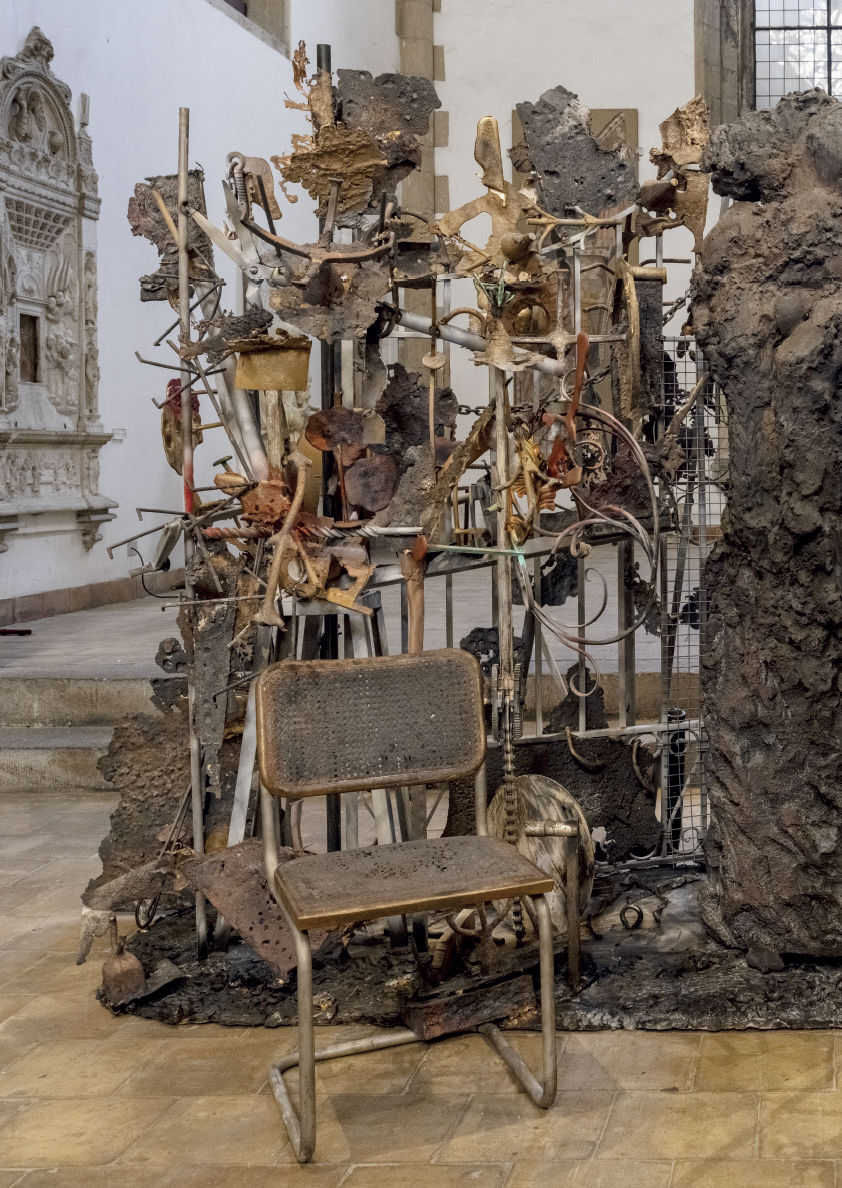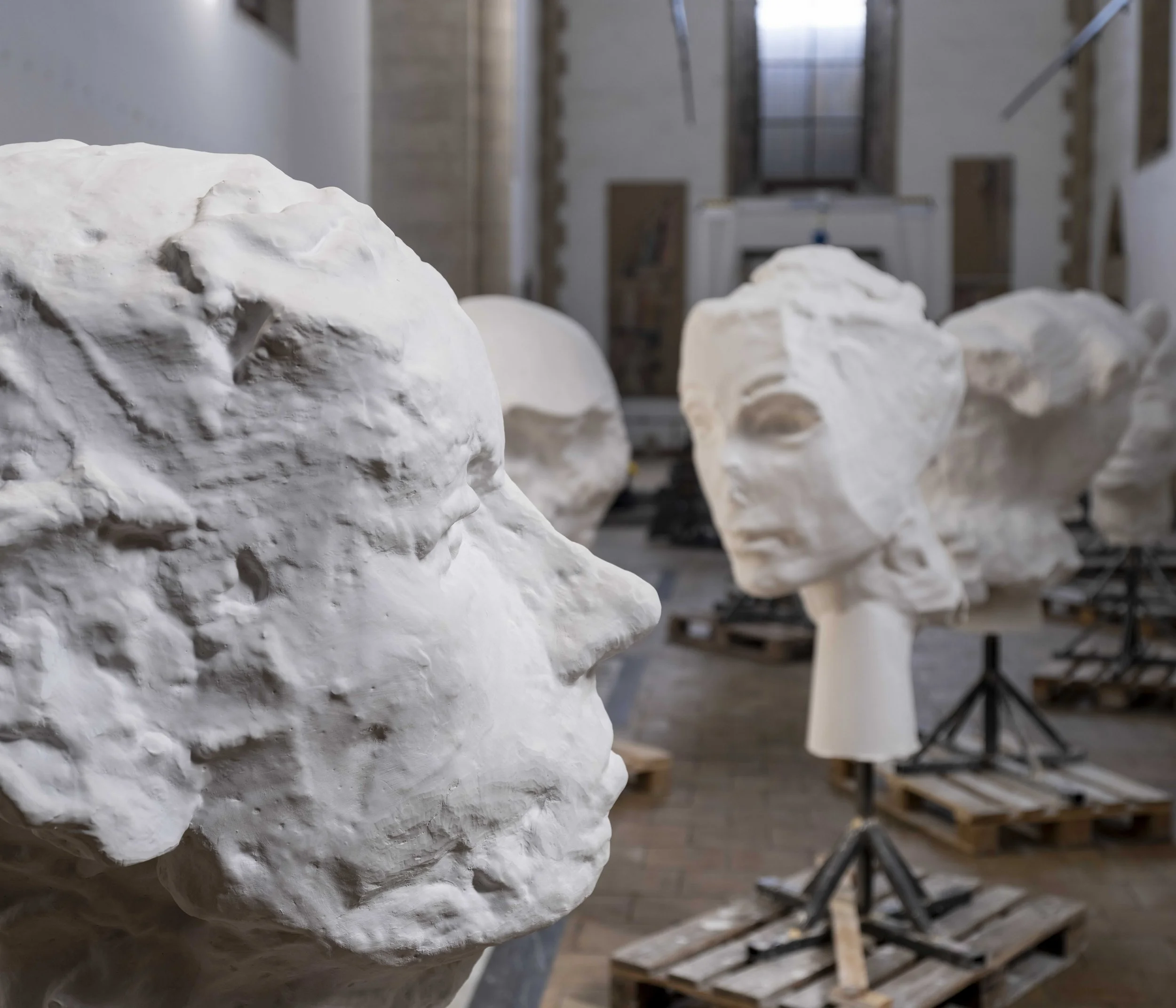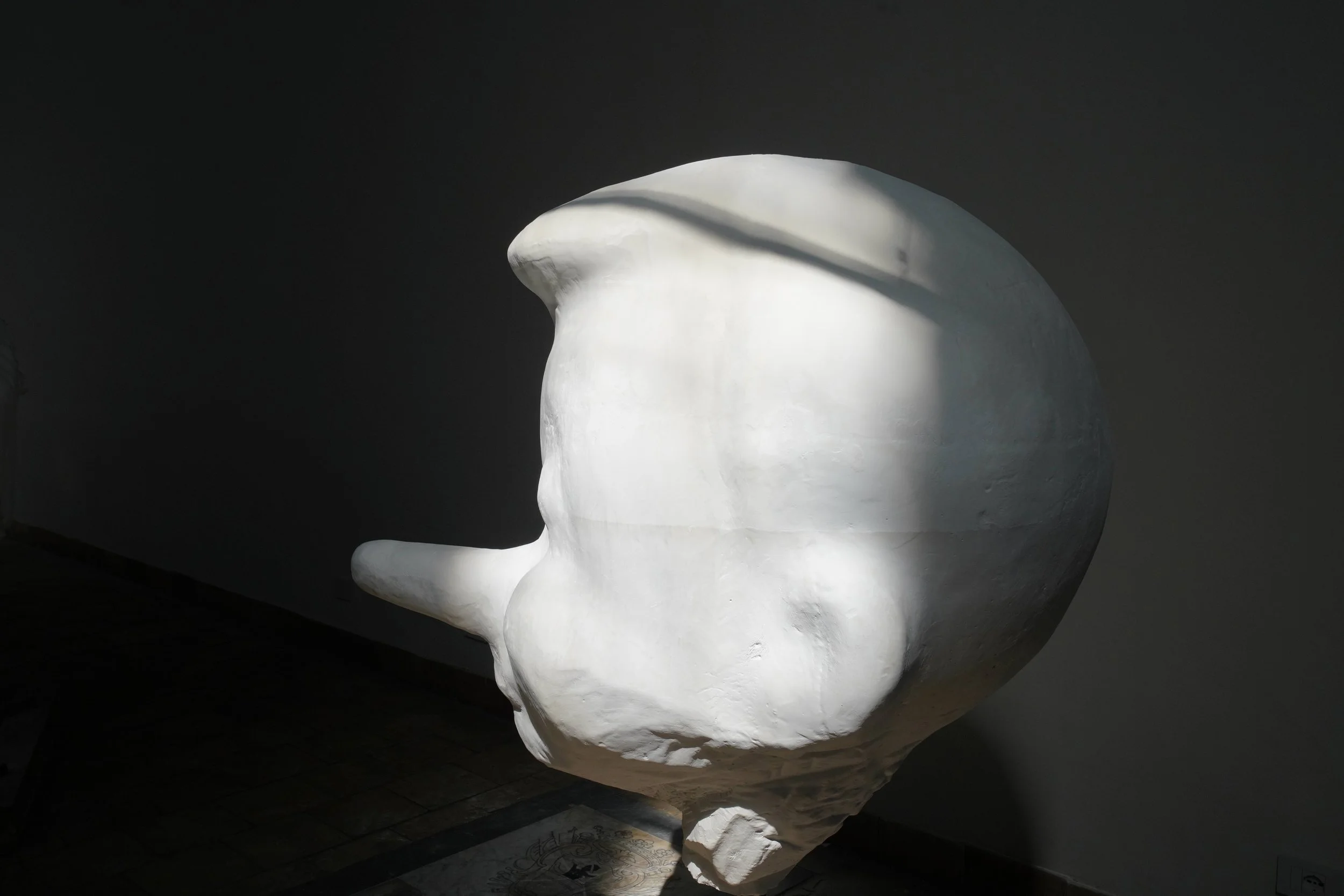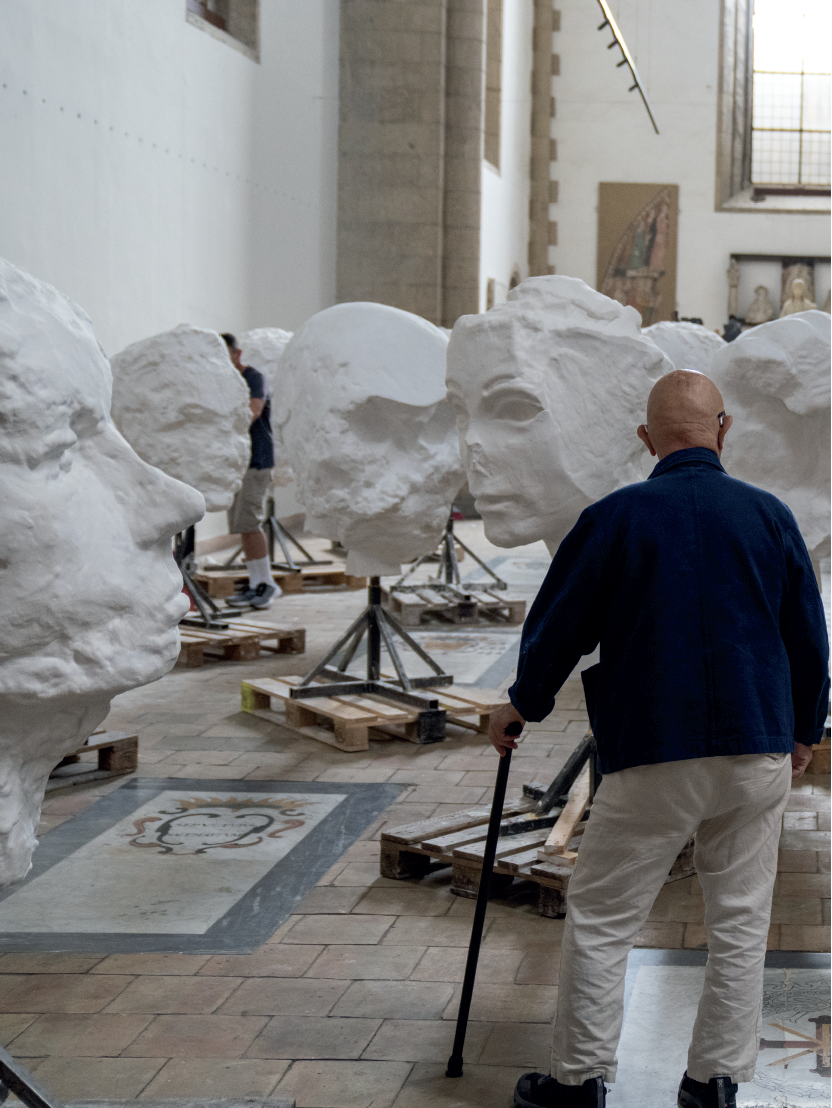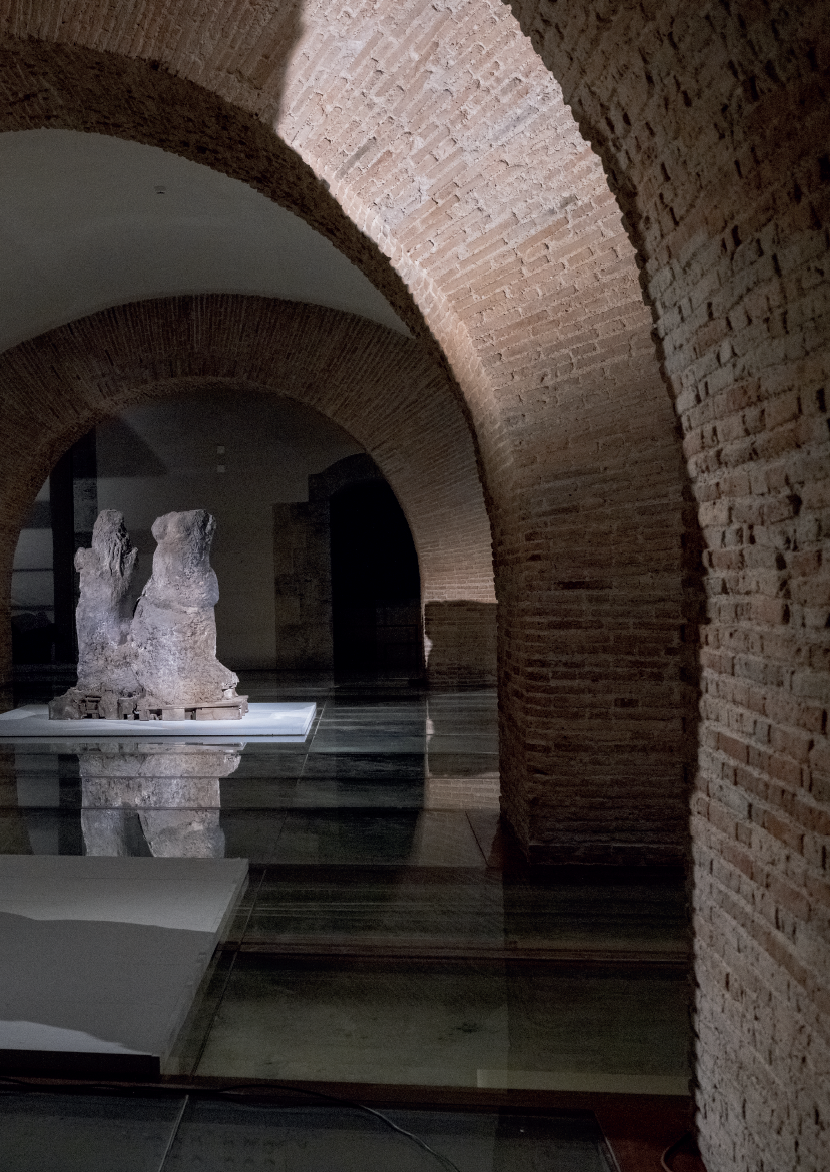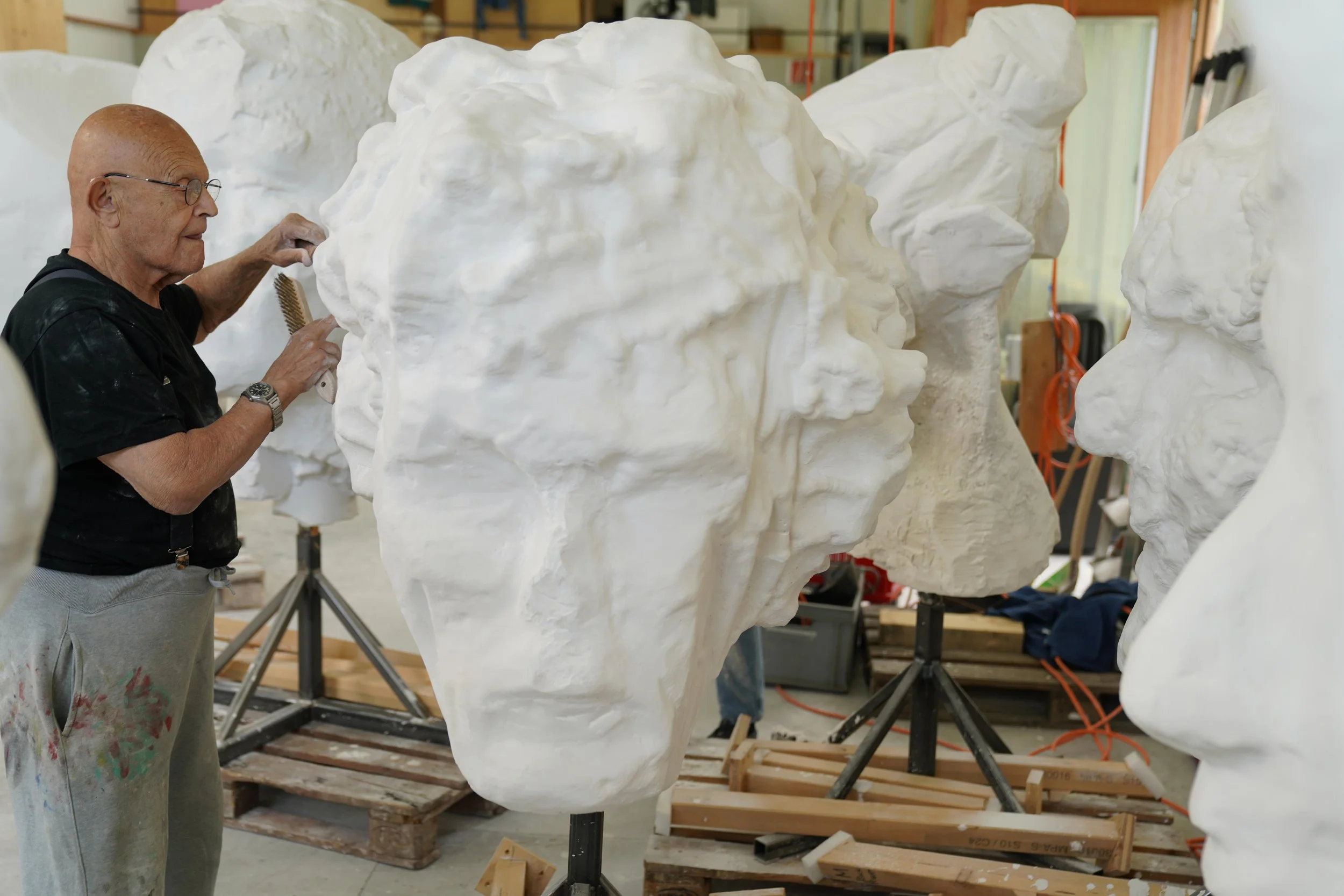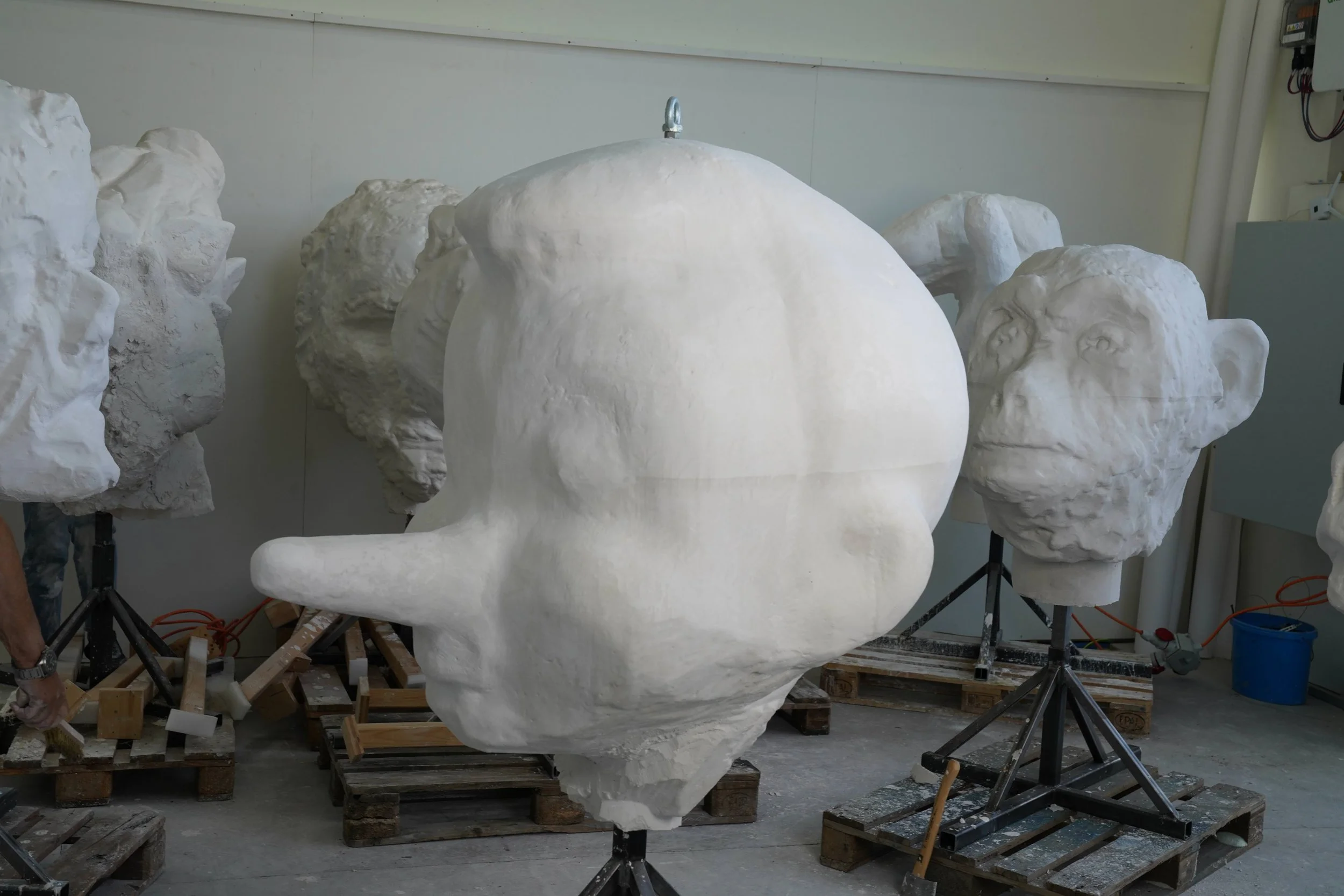Pop-Up Italy: Jim Dine in Italy and Italy in Jim Dine
Dine’s work reflects a reverence for craftsmanship, poetry, and the living presence of antiquity.
In her essay Pop‑Up Italy, art historian Anna Luigia De Simone traces this lifelong exchange, revealing how Italy has shaped Dine’s imagination and how his vision, in turn, reanimates the country’s artistic past.
Download the exhibition catalog below to read the essay in full and preview the installation of Elysian Fields in Naples.
Pop-Up Italy
By Anna Luigia De Simone
“Bring me my charcoal sticks! I must draw the Popes.”
Jim Dine
Jim Dine and Italy
“Once brightly painted/I am a southern Italian singer and prophet.” This is how Jim Dine describes himself in the verses on the walls of his installation/self-portrait The Flowering Sheets (Poet Singing), giving a voice to the colossal head in which he depicts himself and around which majestic wooden statues dance—sculptures inspired by small terracottas from Southern Italy, chosen by him from the Greco-Roman collection of the Getty Villa: the historical site of the Getty Museum, built in the style of an ancient Roman country house, where the work was first exhibited in 2008.
Nine years later, in 2017, Dine celebrated his admission to the Accademia Nazionale di San Luca by presenting this environmental self-portrait once again, alongside a new pictorial cycle, the Black Paintings (2015), in the exhibition House of Words. The Muse and Seven Black Paintings. At Palazzo Carpegna, large-format sculptures and canvases find corresponding echoes in the phrases written on the walls. Amid presences, apparitions, poetic metaphors, and allusions to voices and music, the viewing public is welcomed into the artist’s creative process and discovers the wealth of references to Italian tradition from which his narrative freely draws.
Dine states: “I was born with the desire and facility to arrange and rearrange objects so they contain the maximum metaphor. Neighbors that feel right with one another, not necessarily totally comfortable, but who live in an organic way with one another, has always been my goal, visually.”
A good example is offered by the painting The History of Screams – Bernini, Damaged by a Crack, which seems almost to continue in the verse: “Listening to the impulse of strokes/ The history of screams – Bernini,/ Damaged by a crack/ Executed and invented by memory.” Impressions resurface, triggered by an object with sentimental value. Perhaps an original seen firsthand, or its reproduction encountered through the media. Like emotional pop-ups, they open in Dine’s mind, reconnecting him with personal memories ready to be reinvented and to become part of his world of “objects,” of his “vocabulary of feelings.”
He confesses: “My poems are a vast receptacle of my unconscious. Writing is nourished and inspired by the things I see and by what I feel.”
Dine in Italy
Alan Solomon once said: “Dine sees objects symbolically, not in a conventional or historical sense, but in a new psychologically attuned way.” This set him apart from the other protagonists of happenings, new dada, pop art, and nouveau réalisme, who were also grappling with the “shared theme of the real world’s multiplicity and mediums,” to use Celant’s words. He stood apart, above all, from the impersonality of the work of the pop artists, with whom he was too often confused.
Dine himself remarked: “I believe the most inaccurate things ever written about me have to do with pop art.”
Italy surely played a historic role in this misinterpretation. It was the stage from which his work was presented to the world at the 1964 Venice Biennale, just as the international debate on pop art flared up, wrongly grouping all the U.S. pavilion’s artists under the same label. And yet, the special relationship between image, painting, word, and object in his work had already been understood by Italian critics at the beginning of the decade. Dine recalls: “Ileana Sonnabend and Beatrice Monti introduced me to the Italian art world in the early ’60s. Gian Enzo Sperone exhibited me (1965, 1973, 1975) in Turin.”
Meanwhile, news and images of his happenings had appeared, as early as 1961, in the magazine Metro and in the Almanacco Letterario Bompiani, accompanied by photographs by Ugo Mulas—likely speaking to the imagination of artists such as Tano Festa, Jannis Kounellis, Mario Merz, Pino Pascali. In 1962, his solo show at the Galleria dell’Ariete in Milan highlighted his relationship with reality and the autobiographical value of the tools in his paintings. The following year, Enrico Crispolti emphasized the connection to European artistic culture in the “subtlety and density of the issues [he addresses]” alongside “a freedom and concreteness of objectification that is entirely North American,” while Maurizio Calvesi described him as a “transitional figure” between neo-dada and pop art, the latter defined by the critic as “reportage art.” Reflecting on the importance of painting in the artist’s poetics, Carla Lonzi saw an effort to give “human value to objects by striving to reveal them visually.” Years later, Celant would write that in Dine’s work everything seems immersed “in the amniotic fluid of the paint where objects float in an intense visual universe.”
Italy in Dine
From the 1970s onward, major exhibitions presented Dine’s work: in 1976, a retrospective at Palazzo dei Diamanti in Ferrara; in 1988, a large anthology at Ca’ Pesaro in Venice, curated by Attilio Codognato; Jim Dine in Italy, in Siena between 2000 and 2001, documented his presence in Italian collections; and finally, in 2020, Jim Dine at Palazzo delle Esposizioni in Rome, curated by Daniela Lancioni, attempted to reconstruct nearly sixty years of activity (1959–2018). Dine recalls: “I have had a very creative relationship with Rome since 1968, when director Elio Petri asked me to work on a film he was making about a painter. I still remember the smell of those winter nights, with coal in the air, and now, in 2025, it is still with me.”
In the 1980s this relationship with Italy deepened through Titian and classical art. “Titian’s great Pietà at the Accademia in Venice, which I visit every year, has (I believe) influenced my practice ever since I saw it in person in the winter of 1986. At that time I lived in Venice for two years.”
On the walls, in canvases and sculptures, the poet-painter summons heroes, artists, popes, and puppets, composing unpredictable visual charades capable—like the shovels, clothes, and tools held in place, in his paintings, by color—of leading us into his innermost world. Since then, his works have featured heads, Venuses, torsos encountered in museums, in junk shops, or in reproductions of archaeological finds treasured by his mother.“ My mother used to take me to the museum in my hometown when I was a child. She spoke of Greek and Roman sculpture, which meant a lot to her. They sparked my interest in the great collections of antiquities in the world. I have observed and studied them for all of these 90 years.
Dine is not drawn to these relics as objects of popular culture. He thinks of them as “timeless figures” that come into contact with everyday moments and become autobiographical when captured by his gaze, which re-signifies them. At Palazzo delle Esposizioni he wrote: “Jim finally/ is ill-equipt/ to deal/ with the competitive/ world/ of puppets,/ the tranquility of Tuscan/ politics/ and cares and the business/ of life./ Greek temples/ at Paestum/ Geppetto at Pompeii.”
These are recurring archetypes in his poetic imagery, that in his works are paired with and equated to other elements of his artistic vocabulary. For example, in diptychs like Blue Valley (The Mead of Poetry) (1987) or Ape, Police, Doctor, Soldier, Me (1997), effigies from different eras (Pre-Columbian, Egyptian, Roman) and different worlds (Pinocchio, hearts, the Venuses) are juxtaposed, and then always somehow associated with personal stories. Thus, more than as “a Southern Italian singer,” Dine sees himself in an Italian character: Collodi’s puppet, Pinocchio, whom he discovered as a child watching the Disney film and later reproduced in multiple formats, based on a statuette bought in a shop. Like Pinocchio, he reads things, passions, and life’s events through the lens of his own sensibility. He makes what stands before him his own and, unobliged to the original truth, allows another version of it to emerge: a truth reinvented by his imagination.
Because, in the end: “the spot in front of your nose/ [is] really a field of miracles.”
To read the entire exhibition text, download the pdf below.



